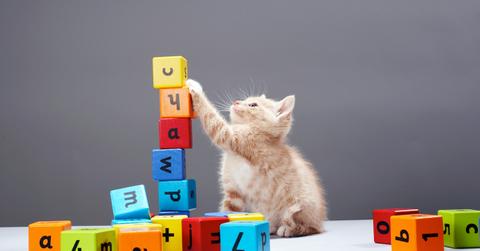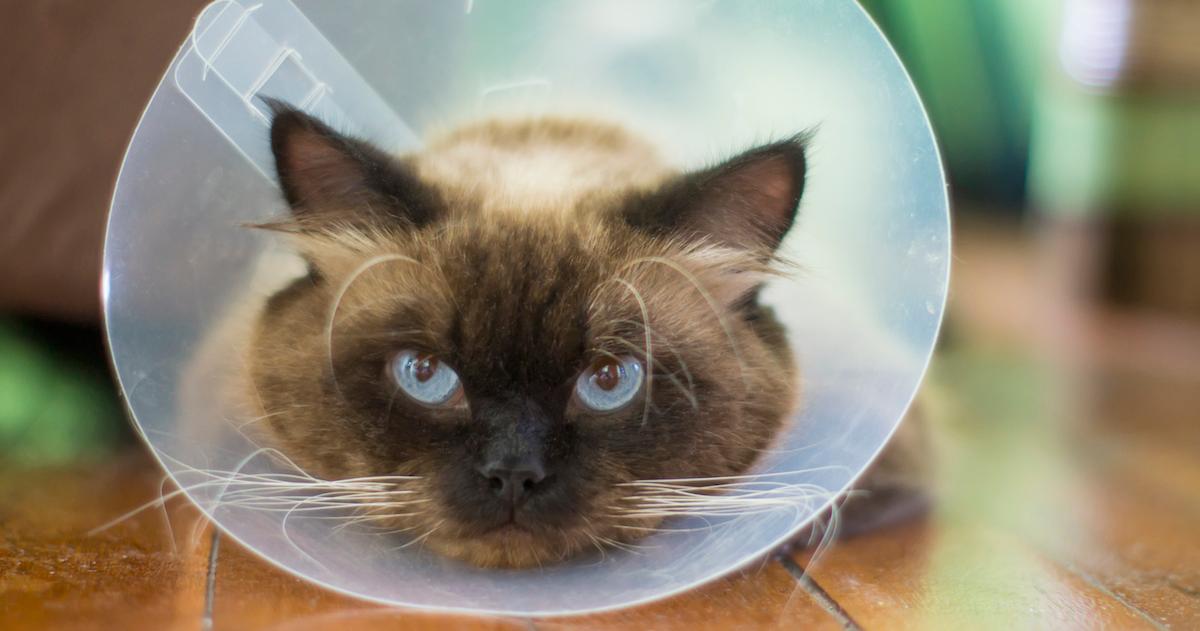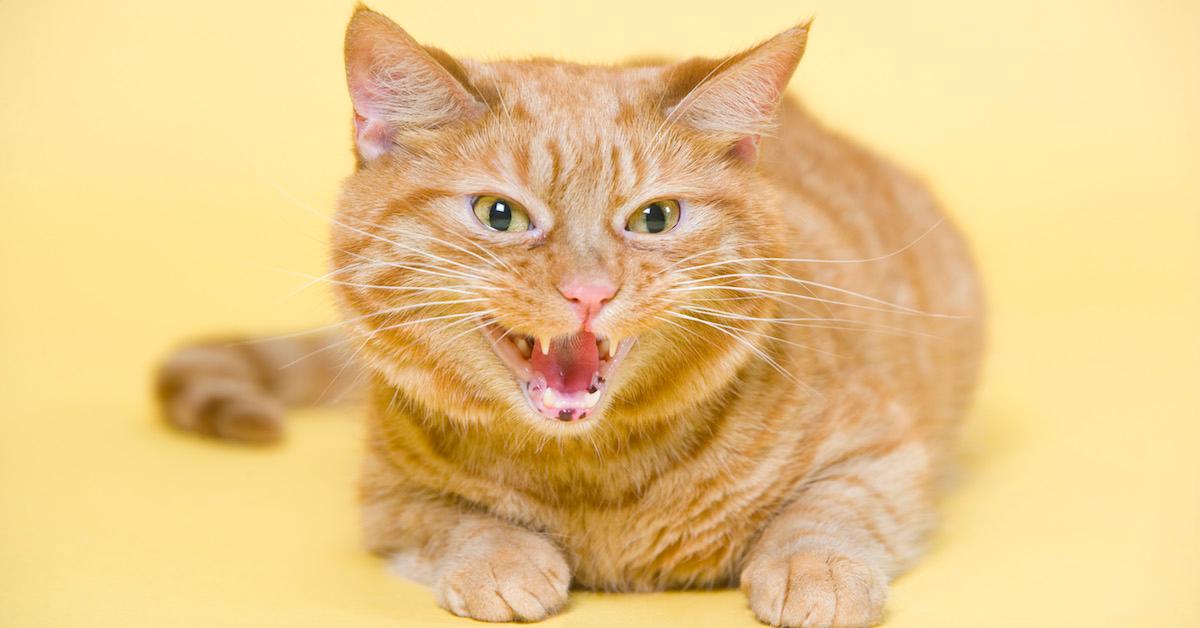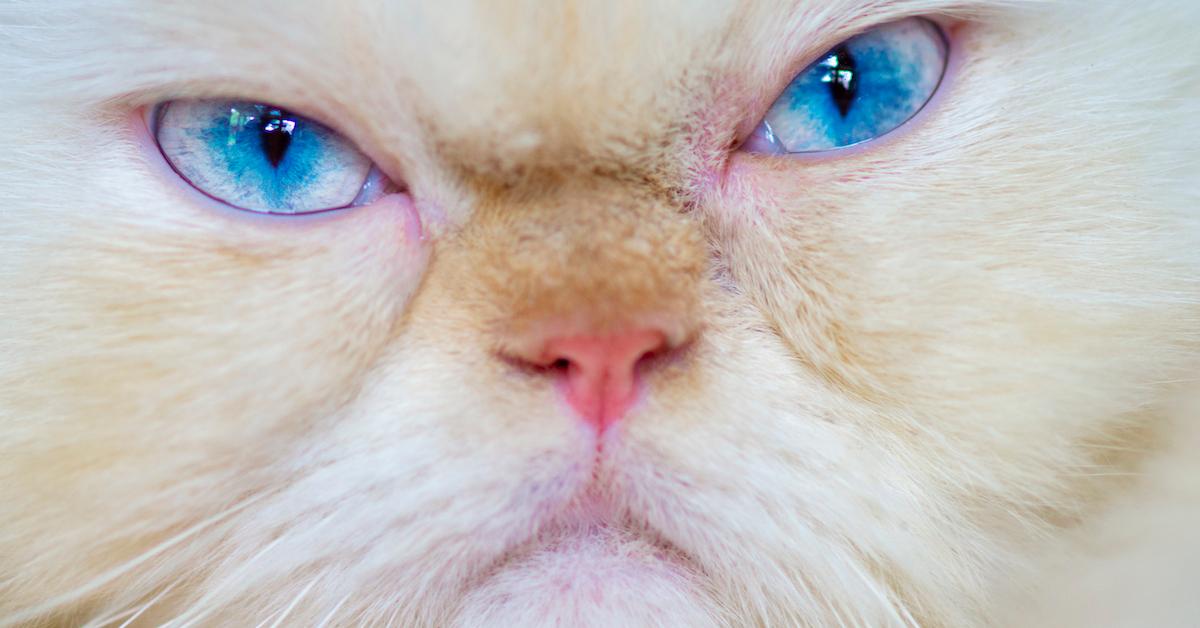What Is Your Cat Trying to Tell You? Breaking Down Common Feline Sounds and Expressions
Updated Feb. 17 2021, 3:15 p.m. ET

Cats can be incredibly hard to read — even our own fur babies sometimes seem determined to act in ways that vex, delight, or infuriate us, though this isn’t news, especially not to seasoned cat parents. After all, the innately mysterious nature of our feline friends has fascinated human beings for centuries.
Cats might be as lovable and loyal as their canine counterparts, but they are also notoriously moody and mercurial. That said, the keys to understanding their true intentions lie in their vocalizations and body language — cats are neither as inscrutable nor as mysterious as we might think they are. Not only that, it turns out understanding what your cat is trying to tell you might be as easy as learning to speak the language.

This cat is telling you they are dismayed.
Your cat’s vocalizations can mean different things.
According to Meowingtons, cat language is more than just a series of differently-pitched meows. Different portions of a cat’s meow mean different things. It could be a greeting, a cry for attention, or a demand for more food. Cats also chirrup or trill when they want attention. This sound is similar to a mix between a meow and purr, which is usually combined with a raised tail. Sometimes it’s just another plea for food, though. In fact, most of these sounds could signify a desire to eat.
According to Sciencenorway, cat’s meow for us in the same way that they meow for their mothers. In the wild, this behavior would usually end when the kitten reached adulthood, but domestic cats continue to use this purposeful mewling when speaking to their people. Why? Because it works! We respond to this behavior in the same loving, supportive way that their mothers would. In that sense, we end up becoming our cat’s true pet parents.

This cat is telling you to back off.
Cats will also purr when they are comfortable, relaxed, or content. You may have noticed cats purring when you pet them or when they are lying comfortably on your lap. At the same time, however, cats will also purr to help themselves feel better when they are sick or to help fix a broken bone. According to WIRED, the resonant frequency of a cat’s purr can actually promote tissue regeneration in the same way as high-impact exercise.
Hissing usually means that your cat is unhappy or feeling threatened, which is usually pretty obvious. Finally, there’s caterwauling: the long, drawn-out meow that you always see cartoon cats engaging in on neighborhood fences at night. Excessive yowling could mean that your cat is in heat or, in older cats, it might mean they are in distress. Either way, if your cat is yowling that much, you’re probably going to want to talk to your vet, just in case.

This cat is also telling you to back off.
What is your cat’s body language trying to tell you?
Cats engage in a number of cute or unusual physical displays. According to PetSafe, these displays could mean any number of different things. Headbutts, licking, and kneading are all different ways of showing affection, while arching the back signifies aggression or fear. Heck, even blinking slowly has meaning in cat body language — cats tend to exhibit this behavior when they are happy and comfortable. It makes them look sleepy, but it also means they love you.
Comfy cats also tend to knead their paws on the lap or chest of whomever they happen to be sitting upon, which is a learned behavior that starts when they are kittens. Cats who knead their mother’s belly are tryinig to stimulate the flow of milk. For us, kneading just means they are comfortable as they would be with their biological mothers.

This cat is telling you, he...he's a lawyer...he's not a cat.
What is your cat’s tail movement trying to tell you?
Cats don’t wag their tails to signify happiness like dogs — instead, each different twitch holds its own significance and emotion. For instance, cats who wag their tails are usually feeling frustrated or over-stimulated. They either want to be left alone or they are spoilin’ for a fight. According to Meowingtons, a puffed-up tail means your cat is either angry or scared, while a swishing tail means they are upset or excited.

This cat is telling you that they are pleased by this.
What does it mean when my cat shows their belly?
One last piece of advice from the folks at National Geographic — if your cat rolls and shows you their belly, do not go to pet it. Dogs show trust by rolling over and begging for a belly rub, but cats are the exact opposite. While showing their belly does mean that a cat trusts you enough to show their vulnerable parts, it's not because they want you to get up in their business.
Instead, they're really saying, “Oh, I can trust this person enough to not touch me, if I decide I want to lay on my back for a while.” Touching that belly is sometimes a good way to get scratched. That said, some cats do enjoy a belly rub, you just gotta make sure the cat you’re about to pet is one of them.